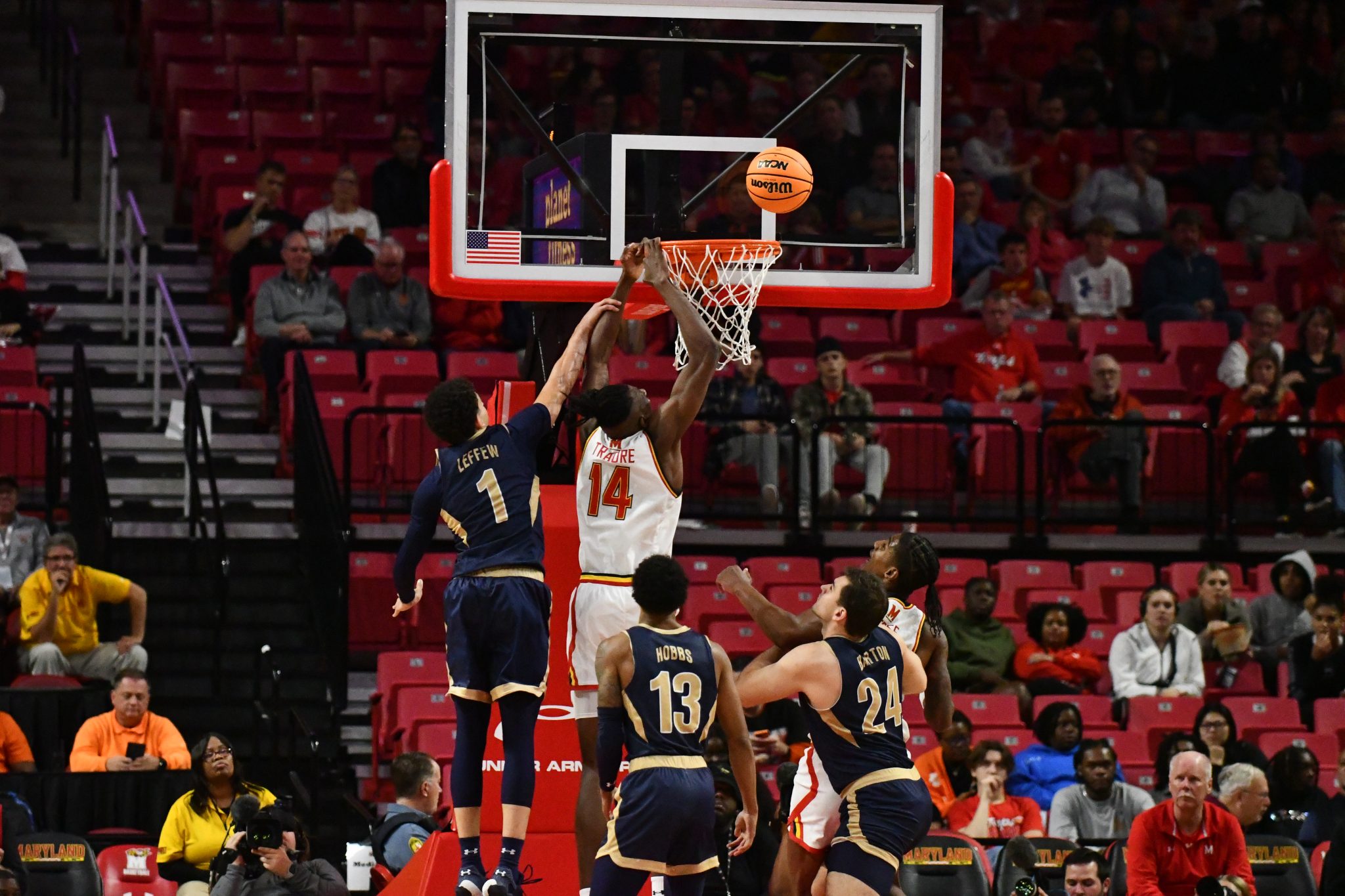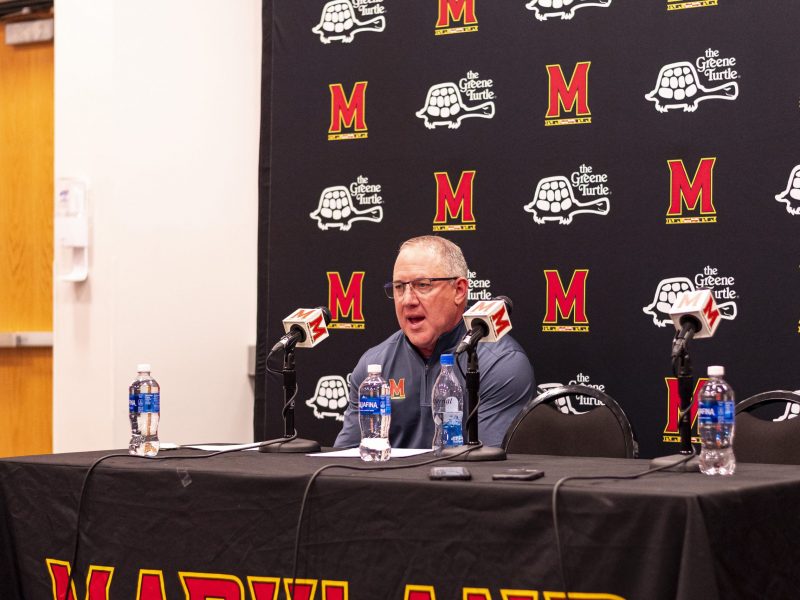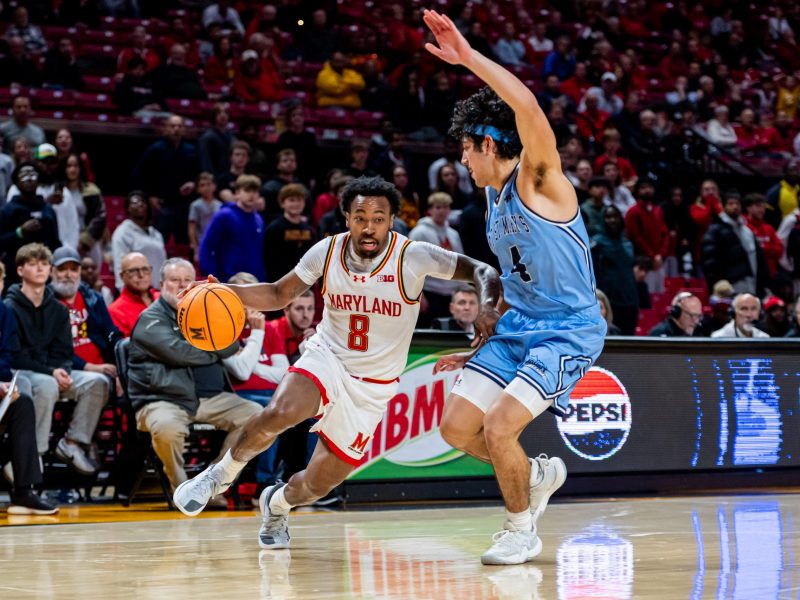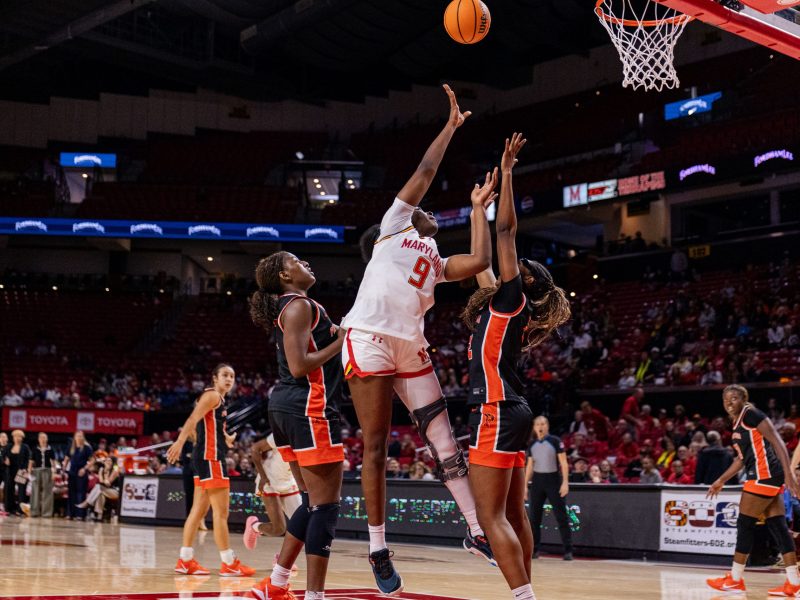Kevin Willard knew Maryland men’s basketball didn’t have much time to prepare for an early regular season tournament after tipping off its season on Tuesday. It wasn’t an ideal situation for a group that didn’t play much together throughout preseason scrimmages due to multiple injuries.
In the Terps’ pair of Asheville Championship matchups, that unfamiliarity showed in a disjointed offense that struggled to make the most of limited possessions. After its first three games, Maryland sits at the bottom of the Big Ten in average points per game.
The Terps fell to Davidson and UAB by three points in each game, missing potential game-tying three-pointers as time wound down on Friday and Sunday. The Terps’ three-point shooting was a problem all weekend — one Willard knew they needed to address entering the season.
Maryland shot 32.8 percent from behind the arc last season, which ranked 238th of 363 teams in the country.
Willard believed this year’s team would shoot better with the addition of freshman Jamie Kaiser Jr. and improvements from returners such as Donta Scott, Jahmir Young and Noah Batchelor.
[Maryland men’s basketball loses second straight game in 66-63 loss to UAB]
It hasn’t happened yet. Maryland has shot 22.6 percent from deep in its first three games, which ranks 321st of 362 teams so far this season.
Those long-range issues could limit how Maryland wants to run its offense. Willard said before the Terps’ pair of Asheville Championship games he wants to funnel their offense through Julian Reese.
Reese did well with limited touches against Davidson, finishing with 16 points and 11 rebounds, but most of his production came after offensive rebounds or from pick-and-rolls.
Davidson repeatedly threw doubles at the junior when he was in the low post, forcing him to kick the ball back out to shooters who couldn’t capitalize on open chances. On Sunday, UAB’s larger bigs kept Reese to a five-point performance.
The Wildcats and Blazers might’ve given future opponents a blueprint to contain Reese and Maryland’s offense if the Terps’ shooters don’t improve.
But if WIllard’s team develops a consistent three-point threat, the Terps could make teams like Davidson and UAB pay for focusing defensive attention inside. If defenses adjust to cover shooters, it’ll also give Reese more space to work in the lane.
[Maryland men’s basketball drops first game of season in 64-61 loss to Davidson]
Until then, the Terps need to avoid compounding their offensive issues by limiting their chances with the ball. Maryland gave the ball away at least 13 times in each of its first three matchups. The Terps hit or exceeded that mark in only eight of their 35 games last season.
Maryland’s turnovers against UAB were especially costly, allowing easy run-out dunks late in the first half that allowed the Blazers to trim a double-digit deficit to just six at halftime. UAB finished with 22 points off of Maryland turnovers.
“The two [turnovers] in the first half really changed the momentum of the game,” Willard said after the game. “I thought we were dominating, really playing well defensively and we had … three turnovers that led to six points and just kind of kept them hanging around the game.”
The Terps’ early season losses resurfaced their offensive deficiencies and created a potential plan to defend this Maryland attack. Willard said he saw some progress in how players looked in adjusted rotations despite the defeats.
He and the Terps hope increased time together helps them evolve with tougher matchups on the horizon.



